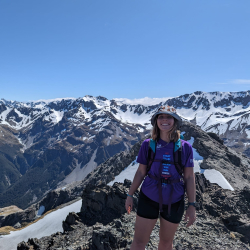Meghana's research focuses on uncovering the underlying physical processes governing ice flow and fracture, spanning scales from the micro-scale ice physics to macro-scale ice sheet behavior. Much of her work investigates the processes activated by rapid ice deformation, which typically take place in shear margins, from a modeling perspective. With the TIME project, she is assisting in the gathering of field measurements of the processes that she hopes to model, and the data from TIME will be invaluable in informing these parameterizations and a mathematical picture of ice deformation.







